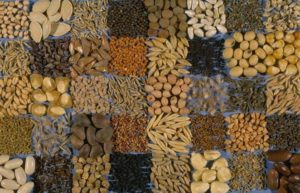
The National Organic Coalition recently released an analysis of the state of classical plant breeding and past efforts to improve funding for this fundamental sector of agricultural research. The report’s summary states that despite a clear mandate from Congress and significant public input, the USDA National Institute for Food and Agriculture (NIFA), and previously the Cooperative State Research and Education Service (CSREES), has failed to provide real funding for development of public cultivars and animal breeds.
As OSA’s Senior Scientist, Dr. John Navazio, explained in a recent open letter in response to the op-ed piece, “How to Feed the World in a Cost-Effective Way:”
I am frequently very disappointed when I hear media stories extolling the virtues of genetic engineering as if it is the only viable option and is the truly advanced form of plant breeding. It is as if classical plant breeding has dried up and blown away and is inconsequential in comparison to genetic engineering. Nothing could be further from the truth! Many of the plant breeders I know are doing some of the best plant breeding, bar none, that has been done since the rediscovery of Mendel’s laws in 1900. Pioneering breeding work is being done on breeding genetically diverse, resilient crop varieties that are able to adapt to the environmental challenges occurring in low-input, sustainable systems that many farmers are incorporating around the world. Best of all, these varieties are being bred in participatory partnerships with farmers who then become farmer breeders who continue adapting these crops to their environments and unique needs into the future. The seeds are not patented and there is no “lease agreement” as there is with genetically engineered crops. Most importantly, the farmers grow and share their seeds with their communities as farmers have done for over 10,000 years.
More background on the issue, taken from NOC’s report, follows. Read the National Organic Coalition’s full analysis and recommendations here (opens PDF)
The last several decades have seen a steady decline in development of new publicly available plant varieties and animal breeds. Although classical breeding provides the most cost effective way to develop new publicly available breeds and cultivars, both public and private institutions are failing to direct research dollars to this critical work. It is estimated that it costs approximately one million dollars to develop a new plant through classical breeding and that genetic modification may cost as little as five million dollars and as much as sixty million dollars1
This shift away from breeding for publicly available cultivars and breeds has been closely tied to strengthened intellectual property rights and the now widespread practice of patenting new plant and animal varieties. Private funding has been redirected to other technologies such as genomics, and the scientists have followed. Since scientists in the private sector have little incentive to develop public cultivars and breeds, it is up to our public institutions to fill this role. Yet our public institutions are failing to provide this public good.
The impacts of these shifts are significant and are a key factor in our narrowing pool of
publicly available germplasm. Lack of agricultural diversity undermines national food security and agricultural stability. By encouraging more uniform agriculture, our crops are more vulnerable to disease and pests. We are also handicapping our ability to adapt to climate change and related changes in precipitation. We are creating an agricultural system that is less agile in responding to economic trends, possibly hindering our global competitiveness. By failing to diversify our crops and livestock, we are failing consumers looking for foods that meet their nutritional needs and taste preferences, and failing farmers looking for locally suitable varieties of plants and animals. Organic farmers and others that rely on markets where GMOs are prohibited or undesirable are particularly affected as they now have fewer choices for commercially available seed.
This shift away from classical breeding has led to deterioration of capacity in our research institutions, including land grant universities. There has been a decline in the number of plant breeders at the State Agricultural Experiment Stations, plant breeding departments at universities are being closed, and we have seen a correlating decline in graduate students being trained in classical breeding methods making it even more difficult to assure our future in this critical scientific field.
The role of the AFRI program in reinvigorating the investment in public sector plant and animal breeding is critical. Addressing obstacles for classical breeders to be competitive is essential to ensuring a diverse and globally competitive food supply.
